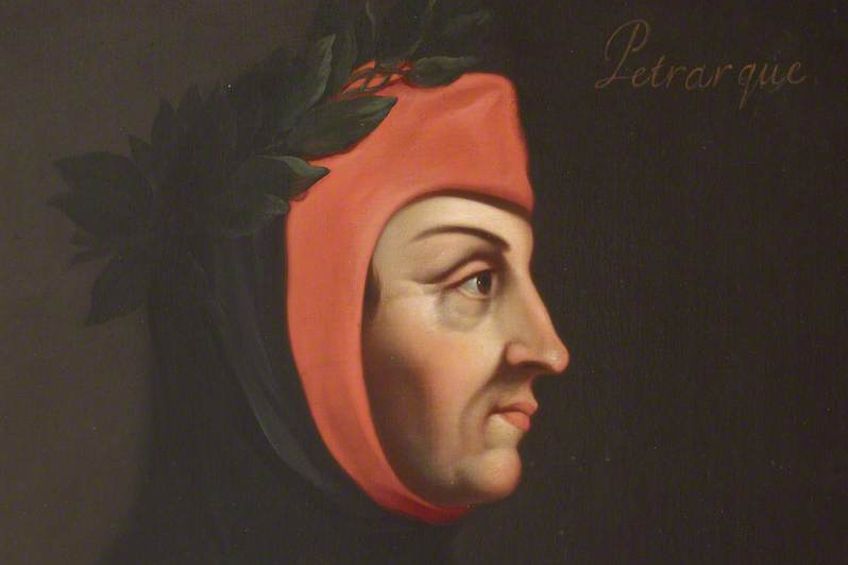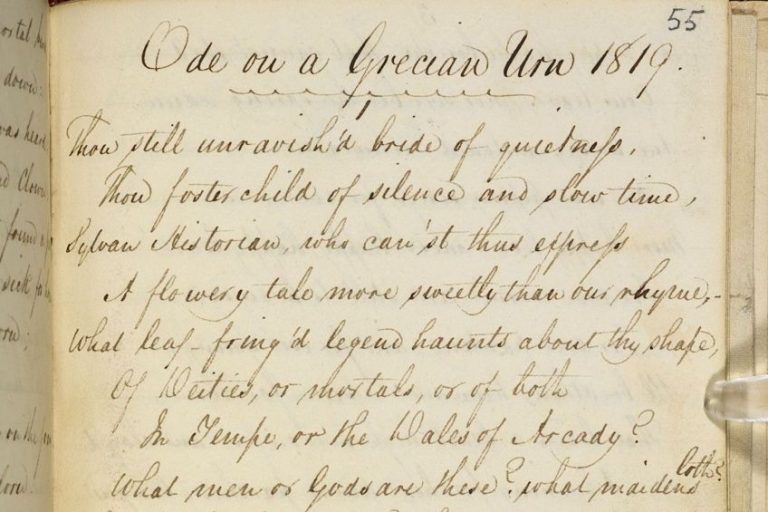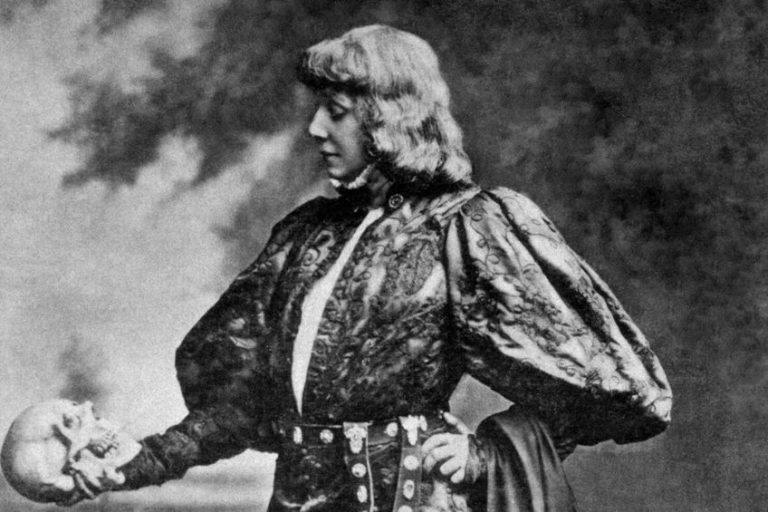Petrarchan Sonnet – A Detailed Look at Structure and Rhyme
There are different types of sonnets out there, and while some of them can be rather obscure, there tend to be two that dominate: the Shakespearean and Petrarchan sonnets. Our goal today will be to focus on the latter. I will explain the structure of the Petrarchan sonnet by looking at the rhyme scheme, meter, and volta of this form. However, this is hardly enough, is it? I will also have a look at the man after whom the Petrarchan sonnet is named and even give a few points here and there on how to write a Petrarchan sonnet. If these words have aroused some level of interest, then we should keep that going and get into the primary information below!
A Look at Petrarchan Sonnets
In the English language, we tend to favor the Shakespearean sonnet when it comes to sonnets, but the Petrarchan sonnet is another very popular choice when it comes to rhyme scheme and line arrangement. However, this form is also known as the Italian sonnet because that is where it originated. So, what is the structure of an Italian sonnet and how does it differ from a Shakespearean, or Elizabethan, sonnet? Well, that’s the kind of information that will only be determined if you continue to read and jump into the next few sections. However, before those sections, let’s first hop into a summary to get ourselves acquainted with what we will soon explore.

Summary of the Petrarchan Sonnet
We will be getting into far deeper information in the section after this summary, but the summary can help those who may need it. These points are very brief though, and that should be kept in mind:
- The Petrarchan sonnet is named after Petrarch. This was a 14th-century figure who can be seen as comparable to Shakespeare but in Italian instead of English. His work on sonnets would actually be the thing that inspired many English writers to make use of the sonnet structure, and so Petrarch’s influence cannot be easily overstated even if his work is not all that known in the English language.
- The Petrarchan sonnet has a rhyme scheme that is partially flexible. The beginning of a Petrarchan sonnet is arranged as an octave with a rhyme scheme set out as ABBAABBA, but the final six lines of the poem can be more variable, such as adopting a CDCDCD or CDECDE structure. Some even throw a rhyming couplet at the end, but this shows the influence of the Shakespearean sonnet more than it shows the more traditional Petrarchan sonnet structure.
- The Petrarchan sonnet is not as popular in English. While the Petrarchan sonnet did certainly have a large influence on the English language seeing as the sonnet’s use in Italy led to it being adopted by the English, but the Petrarchan sonnet has not remained the most popular. Instead, the Shakespearean sonnet has become the primary sonnet that many English sonnet poets prefer to use.
The Petrarchan, or Italian, sonnet is one of the more popular forms of sonnet even though it does tend to stand in the shadow of the Shakespearean sonnet in the English language. However, if we want to ask some questions, like: What is the structure of the Italian sonnet? We will need to keep going so that we can better understand this form.
But first, we should look at the man behind the term.
Petrarch: The Namesake of the Petrarchan Sonnet
| Poetic Movement | Early Renaissance |
| Years | 1304 – 1374 |
| Place of Birth | Arezzo, Italy |
| Known For |
|
Everything in this world needs a name of some kind, and the location from which a name arises can change from thing to thing. The name of the Petrarchan sonnet comes from Petrarch. I know, that would have been a very difficult thing to figure out considering the name! But who was Petrarch? Well, Francesco Petrarca, whose name is generally anglicized when discussed in the English language as the mononym, Petrarch, was an Italian scholar and poet.

The poetry of Petrarch is far from his sole contribution to the world. He lived during the early period of the Italian Renaissance. During this time, he became a humanist; he was even seen as one of the earliest humanists. He has become a central figure in the Italian language, and various scholars see him as being an exemplification of the Italian style of poetic composition, and this does make sense. One could see Petrarch as being on par, in terms of the influence of his language of composition, with Shakespeare. They were both immensely influential on their own languages and the literature produced in them.
So, why was he such a notable figure? Well, his poetry would send ripples through European literature, and many imitated his style.
His love poetry has become especially important and would lead to many writing their own versions of the sonnets for which Petrarch was an early proponent. While figures such as Shakespeare would adapt the sonnet into a style better suited to English, the influence of Petrarch would remain. His actual work may not be as well known in the English language, but his work is still incredibly popular in Italian, and the forms he popularized have had effects throughout world literature.
The Rhyme Scheme of the Petrarchan Sonnet
One of the most interesting aspects of the Petrarchan sonnet, especially when compared to the more commonly used Shakespearean sonnet in English, is that it has a somewhat variable rhyme scheme. The basic rhyme scheme of the Petrarchan sonnet is separated into two separate sections. There is an opening octave, which has eight lines arranged as ABBAABBA, and then a sestet.

The sestet is somewhat different from the octave in that it can be more variable. The octave always makes use of the same enclosed rhyme style, but the sestet, or final six lines, can be arranged as CDCDCD, CDECDE, CDDECE, and so on. There are even some writers who make use of a rhyming couplet at the end, but this is usually because of the influence of the Shakespearean sonnet, which always has a rhyming couplet at the end of the poem.
The Meter of the Petrarchan Sonnet
When learning about how to write a Petrarchan sonnet, or even when just reading them, it is good to keep in mind that the traditional Petrarchan sonnet makes use of iambic pentameter. The meter of a poem refers to the beat of the poem, and this is produced through the use of syllables. In terms of iambic pentameter, this refers to a very specific type of metrical structure that is also very common in the Shakespearean sonnet.
Iambic pentameter is made up of both iambs and a five-part meter.
The “iambic” part refers to the use of an unstressed-stressed paired structure. This means that the first syllable in a pair is unstressed. This allows the second to be stressed. An iamb is only made up of two syllables, but the “pentameter” part refers to how many of these iambs are in each line. In this case, thanks to the “penta” part of the phrase, it has five of these iambs. This then results in a total of ten syllables per line as there are five sets of paired syllables.
However, it should be noted that while iambic pentameter is the most common and traditional form of meter in the Petrarchan sonnet, it is not a rule that an Italian sonnet requires iambic pentameter. For instance, if you were to write a Petrarchan sonnet that conformed to the line number requirement and the rhyme scheme, it would still be a Petrarchan sonnet even if you did not have the traditional metrical structure.

The Volta of the Petrarchan Sonnet
Traditional sonnets include what is known as a volta. This is a central component of the poem. In terms of the traditional use of this variety of sonnet, the volta can typically be found between the octave and the sestet. So, what is a volta in the first place? Well, it refers to a “turn” in the text where there is some kind of a shift in the poem. This shift can be a change in subject, speaker, style, perspective, mood, and so on. This volta is generally found in all traditional sonnets, but it typically occurs in different places based on the type of sonnet. For instance, the volta in the Shakespearean sonnet usually occurs near the end, before the rhyming couplet.
This shift allows the poem to be about two general ideas, such as the poem starting on the idea of beauty and ending on the idea of time’s effects on beauty.
The Petrarchan Sonnet in English
The Petrarchan sonnet may have originated in Italy and is even known as the Italian sonnet, but it has been used in the English language for a very long time. In fact, the form came over to the English language in the 16th century, before the works of William Shakespeare were even produced. And these early Petrarchan sonnets would have a major impact on many different English writers.
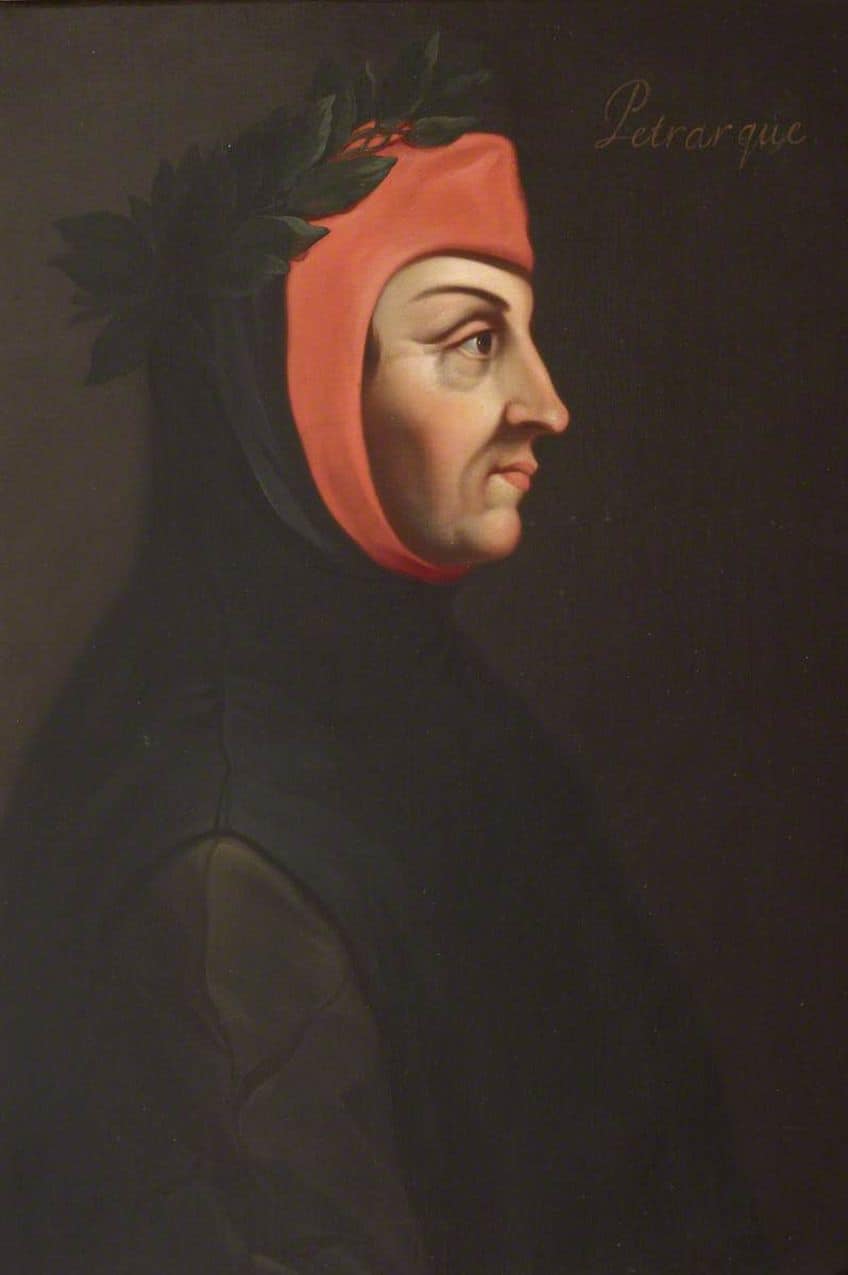
The Petrarchan sonnet is technically better suited to the cadence of the Italian language, but it does certainly work in the English language, and many have adopted it. There are fewer famous Petrarchan sonnet examples in English in comparison to Shakespearean sonnets, but that has not stopped many famous poets from writing them over the centuries. It would be beneficial to examine a few of those English-language Petrarchan sonnets.
Petrarchan Sonnet Examples
It’s now time for a few Petrarchan sonnet examples. If you want to enjoy or learn how to write a Petrarchan sonnet, you should have a look at some actual instances of the form. However, before we get into it, I feel that it is worth stating that I will not be looking at those that actually originated the form in Italian.
Instead, I will focus on the English-language Petrarchan sonnets that have been produced over the centuries.
Whoso List to Hunt, I Know where is an Hind (16th Century) by Sir Thomas Wyatt
| Date Published | 16th century |
| Type of Poem | Petrarchan sonnet |
| Rhyme Scheme | ABBA ABBA CDCDCD |
| Meter | Iambic pentameter |
| Topic | Love |
Whoso List to Hunt, I Know where is an Hind is a poem about the pursuit of the unattainable. However, it is also perceived as a kind of love poem. Insofar as love poems are concerned, it does make use of a rather dark metaphor to illustrate the idea of a romantic pursuit, and that is an actual hunt. The poem posits that the one the speaker pursues is a hind, or female deer, and so there is a violent image put on display.
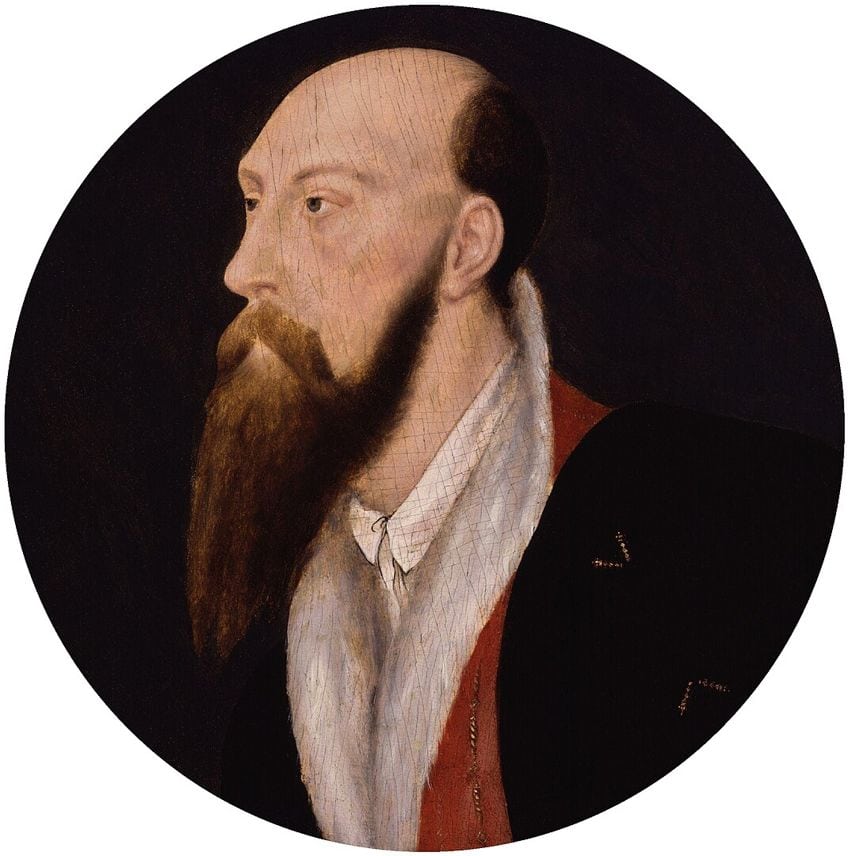
The search for love, and the attempts to essentially “attain” a specific woman, are shown in this gruesome display. It is rather common for certain sects of men to refer to picking up women as a hunt, and this produces an animalized viewpoint of romantic and sexual conquest. So, this may not be all that unusual as a metaphor for a woman from the perspective of a man, but it certainly is unsettling to read, especially in the modern day.
The language that is used in the poem can make it a little harder to understand than more modern versions of English Petrarchan sonnet examples.
The World Is Too Much With Us (1807) by William Wordsworth
| Date Published | 1807 |
| Type of Poem | Petrarchan sonnet |
| Rhyme Scheme | ABBA ABBA CDCDCD |
| Meter | Iambic pentameter |
| Topic | Humanity and nature |
The World Is Too Much With Us is a poem that presents the reader with a philosophical viewpoint. When the Romantics wrote their poetry, they often infused a certain kind of philosophical perspective into it. The Romantics were especially noted for being against the kind of urbanization and industrialization that occurred during their lifetimes, and they were instead in favor of the natural world and how it related to humanity.

This poem explores that very belief. The poem, through the use of a Petrarchan sonnet structure, discusses the ways in which human beings are a particularly materialistic species. We wish to accumulate and grow while paying less and less attention to the rest of the world. The poem wants us to, instead of having this strong fixation on the human world, turn toward the spiritual aspects of human existence.
It also explores the relations between the human race and the remainder of the natural world.
The Grave of Keats (1881) by Oscar Wilde
| Date Published | 1881 |
| Type of Poem | Petrarchan sonnet |
| Rhyme Scheme | ABBA ABBA CDCDCD |
| Meter | Iambic pentameter |
| Topic | Elegy for John Keats |
The Grave of Keats is a poem that explores exactly what you might think that it explores based on its name. There are many poems out there that serve as elegies and tributes to those who have passed away, and this poem is exactly that. Essentially, the poem serves as a means for Wilde to discuss John Keats.

This famous Romantic figure died several decades before Wilde was born, but he was an important source of influence on Wilde throughout his creative career. The poem discusses Keats by specifically focusing on his gravesite. This grave has come to represent Keats himself, and the disproportionate influence that Keats had on the English literary world despite dying at the age of 25.
The poem explores spirituality, the heavenly resting place of Keats, and the physical description of the grave, such as the lack of trees that block out the sun because violets are instead wrapped around his grave.
I, being born a woman and distressed (1923) by Edna St. Vincent Millay
| Date Published | 1923 |
| Type of Poem | Petrarchan sonnet |
| Rhyme Scheme | ABBA ABBA CDCDCD |
| Meter | Iambic pentameter |
| Topic | Emotion |
I, being born a woman and distressed is a poem that focuses on female emotion and sexuality. The poem explores womanhood as it was experienced by Millay herself. She discusses the ways in which the speaker feels toward a potential lover. There is an exploration of the lust that the speaker cannot help but overcome when confronted with someone in whom she is interested.
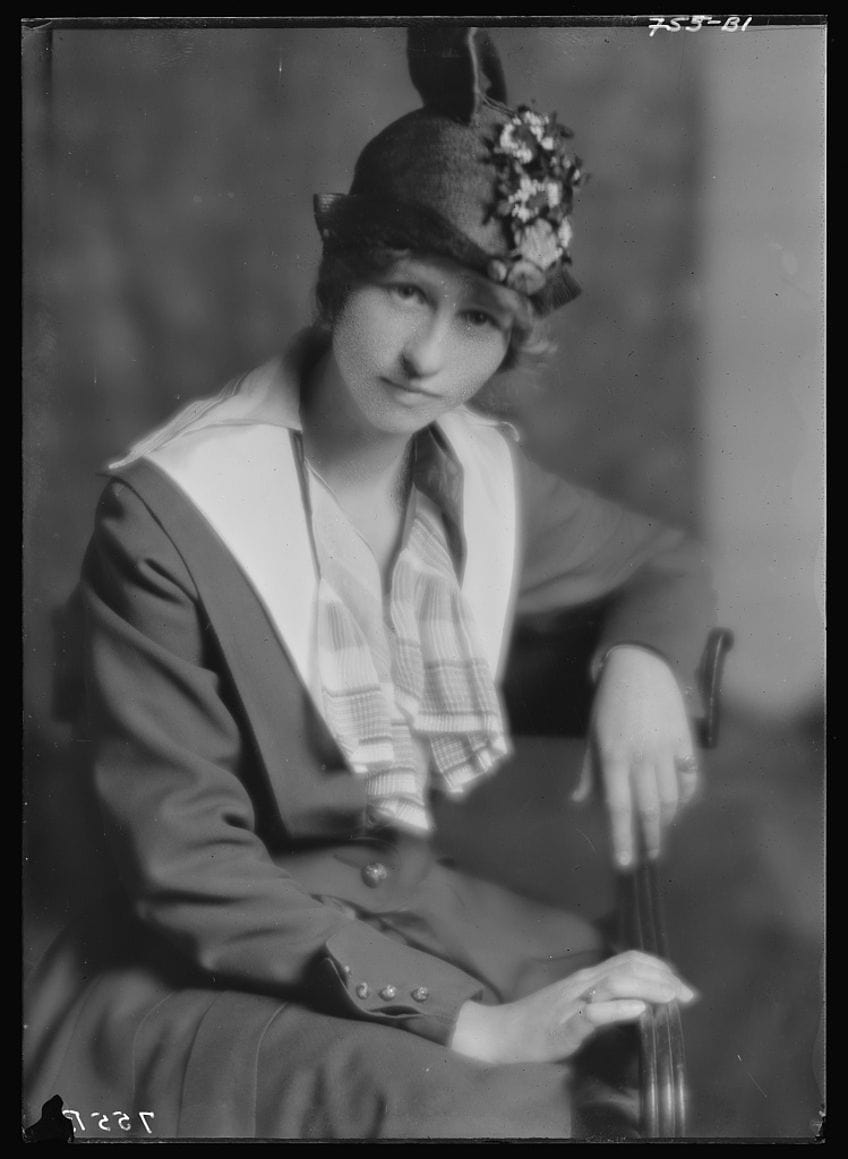
The poem combats these kinds of thoughts by also focusing on the choice to move toward a more rational perspective with regard to relationships when certain lovers may be too emotionally turbulent. The poem critiques the way that women have been taught that sexuality has been used as a means for a man to possess a woman. There are some ideas that are old-fashioned with regard to the way that women think in this poem, but as an early-20th-century text about womanhood, it can be seen as progressive for its time.
The ultimate conclusion of the poem is one that would definitely be seen as more progressive in that it states that the speaker does have the power to walk away from those who may overpower her emotions, and so she can take control of the situation.
The Professor (2012) by Joshua Mehigan
| Date Published | 2012 |
| Type of Poem | Petrarchan sonnet |
| Rhyme Scheme | ABBA ABBA CDCDCD |
| Meter | Iambic pentameter |
| Topic | The life of a professor |
The Professor is a poem that explores the woes of academia. This Petrarchan sonnet example uses this format to speak from the first-person perspective about the life of a university professor. This academic discusses the ways that he feels about his life. He does not enjoy his life and feels misunderstood. He cannot truly do what he wants to do and must instead play the game. He does not raise his own opinions on matters, and he no longer cares about learning. He has resigned himself to his life.
This is not a happy poem, but it is one that those with an academic background may come to understand. The institution of academia can lead one to become jaded. There is a belief from the outside world that academia is a place for learning and the development of knowledge regardless of where that knowledge might lead, but instead, academia is a social institution that has its own biases and traditions. Working within the institution becomes necessary to survive within it, and that can mean losing the part of yourself that might have otherwise argued against what the institution has decided.
The Petrarchan sonnet is one of the most popular forms of the sonnet, and while its thunder has been somewhat stolen by the Shakespearean sonnet in the English language, that does not diminish what the Petrarchan sonnet has accomplished. This article has gone over a number of elements related to the Petrarchan sonnet such as the rhyme scheme, meter, volta, and a few Petrarchan sonnet examples. Hopefully, this overview has been a helpful one that has taught you at least a few things about the Petrarchan sonnet as a poetic form.
Frequently Asked Questions
What Is a Petrarchan Sonnet?
The Petrarchan sonnet is a poem that forms part of the tradition of sonnet structures. This means that it has 14 lines like all sonnets, but it has a specific structure that is unique to it. The Petrarchan sonnet has been a major influence on Italian literature, and, by extension, all the countries touched by Italian poetry. This has meant that a lot of English sonnet poetry can trace part of its origins to the work of Petrarch, the popularizer of the Petrarchan sonnet.
What Is the Structure of an Italian Sonnet?
As a sonnet, the Petrarchan sonnet has 14 lines, but the thing that differentiates it is the use of the rhyme scheme. There is an octave and a sestet. The first makes use of an ABBAABBA structure whereas the sestet is more malleable, but it often makes use of structures such as CDCDCD or CDECDE. This means that the volta of the poem is located after the first eight lines. However, much like the Shakespearean sonnet, the traditional Petrarchan sonnet uses iambic pentameter.
Who Was Petrarch?
Petrarch, whose real name was Francesco Petrarca, was a 14th-century scholar and poet who formed part of the Humanist movement during the early years of the Italian Renaissance. His poetry would come to be perceived as immensely significant in world literature. It was directly influential on the Italian language, but that would soon filter out of the country and make its way throughout the world, and English literature owes an immeasurable debt to the work of Petrarch.
What Are Some Famous Petrarchan Sonnet Examples?
While the works of Petrarch are some of the most influential Petrarchan sonnet examples, they are not as well known in the English language. When it comes to English Petrarchan sonnets, some great examples include poems such as The World Is Too Much With Us (1807) by William Wordsworth, The Grave of Keats (1881) by Oscar Wilde, and I, being born a woman and distressed (1923) by Edna St. Vincent Millay.
Is the Petrarchan Sonnet Popular in English?
The Petrarchan sonnet is popular in the English language, but it is not quite as popular as the Shakespearean sonnet. However, this is because the Shakespearean sonnet is connected to William Shakespeare, and his influence on the English language has probably been far greater than any other individual writer. The Petrarchan sonnet may have originated in Italy, but it’s now found throughout the globe.
Justin van Huyssteen is a freelance writer, novelist, and academic originally from Cape Town, South Africa. At present, he has a bachelor’s degree in English and literary theory and an honor’s degree in literary theory. He is currently working towards his master’s degree in literary theory with a focus on animal studies, critical theory, and semiotics within literature. As a novelist and freelancer, he often writes under the pen name L.C. Lupus.
Justin’s preferred literary movements include modern and postmodern literature with literary fiction and genre fiction like sci-fi, post-apocalyptic, and horror being of particular interest. His academia extends to his interest in prose and narratology. He enjoys analyzing a variety of mediums through a literary lens, such as graphic novels, film, and video games.
Justin is working for artincontext.org as an author and content writer since 2022. He is responsible for all blog posts about architecture, literature and poetry.
Learn more about Justin van Huyssteen and the Art in Context Team.
Cite this Article
Justin, van Huyssteen, “Petrarchan Sonnet – A Detailed Look at Structure and Rhyme.” Art in Context. March 5, 2024. URL: https://artincontext.org/petrarchan-sonnet/
van Huyssteen, J. (2024, 5 March). Petrarchan Sonnet – A Detailed Look at Structure and Rhyme. Art in Context. https://artincontext.org/petrarchan-sonnet/
van Huyssteen, Justin. “Petrarchan Sonnet – A Detailed Look at Structure and Rhyme.” Art in Context, March 5, 2024. https://artincontext.org/petrarchan-sonnet/.


